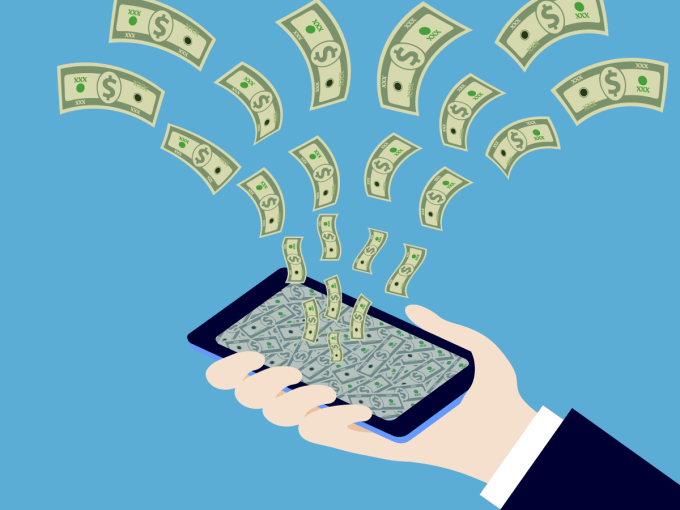Apple’s reveal of sponsored search ads on the App Store was overshadowed by its simultaneous opening up and improvement of its subscription offerings. But for the average developer or publisher, the ads will have a much more immediate effect on their business.
Paid ads won’t begin until Apple has completed a period of free testing. In the interim, App Store publishers should be watching carefully to predict how paid ads will affect their acquisition strategy. With one more channel to spend in, will big publishers dominate even further? Could indies find a new toehold? Is Apple just trying to bolster revenue, or is it working harder on improving the long-moribund App Store experience?
There’s a cynical view that holds that Apple is just creating paid ads for revenue: in iOS9 Apple enabled ad blockers, and just months later, with sales of iPhones and Macs decreasing, it’s now enabling sponsored ads as a powerful new revenue stream. Other cynics will decry that the App Store is now a pay-to-play environment, forcing developers to bid even on their own name or app title unless they want to see competitors kidnap traffic clearly meant for them.
But these views are simplistic and counter-productive. Regardless of Apple’s intention, we know that sponsored ads will be a benefit and opportunity for some developers. The question is: which ones?

The case for big developers and publishers
Based on what we know of user behavior, a user seeing a large ad (initial mockups here) on top of a list of other search results may simply click through the ad, never seeing the organic results. This behavior could be intensified on the App Store, which is mainly displayed on phones with extremely limited screen space. Unless more customers suddenly enter the App Store, it’s hard to imagine that ads won’t decrease organic traffic to some degree.
So search ads may be another lethal blow for those relying on organic traffic as a growth strategy.
The vast majority of developers now face a situation in which paid marketing is practically essential in order to grow. Developers with money to invest in acquisition campaigns can just put money toward sponsored ads.
From Apple’s perspective, favoring large developers even more may not be a bad thing. With two million apps available, the market is simply too saturated. And often, the better products will be those with higher revenue, which can in turn be invested into App Store search. When all is said and done, paid ads may help boil down the overcrowded App Store to fewer, better products.
On the other hand, from a user perspective the highest-earning apps aren’t always the best apps. This is particularly true of free vs paid apps — well-monetized free will always win, even if paid is a better deal.

The case for indies and mid-sized developers
While the acquisition budgets of large companies look intimidating, indies have already been struggling. A new ad format won’t hurt the acquisition efforts of small and medium companies, and may actually help.
One problem indies have long had is the feeling that Apple isn’t doing much to support them or improve the App Store. But sponsored ads are just part of a trend. Not only has Phil Schiller moved over to head the App Store, review times have dropped from over a week to two days, and Apple is working harder to communicate with developers, as shown by the announcement of ads.
For small developers, App Store ads may also be a place that they can compete better than 3rd party ads run through Facebook and others. Outside forces like brand advertisers won’t be present to drive up prices, and small developers should be able to focus on competing within their own sub-categories, since the ads are served based on search terms.
Finally, ads for both indies and big publishers will be automatically generated by Apple from App Store creatives. Without the need to focus on creatives, indies will be on equal footing with their larger competitors — the only requirement to compete will be the ability to track and measure the users arriving from sponsored search, and whether those users have a high lifetime value. And as with Google, per-user prices are likely to be lower for small volumes.
For those with a good product and minimal budgets, if they invest smartly in paid search and constantly measure their results — then double-down on the strategies that prove ROI positive — they can still be successful. The very nature of app store searches involves strong user intent, so smaller developers can still capture an audience of valuable, loyal users, even as the rules of the game change.

The case for overall App Store improvement
But the most optimistic view is that neither large nor small companies will win over each other. The App Store doesn’t have to be a zero-sum game.
Today, it just happens to appear zero-sum, dominated by large developers who have massive budgets for sophisticated advertising and ASO and hold top grossing ranks for years. Stagnancy is not in anyone’s interest, as shown just a few years back by Zynga’s dominance of Facebook and the subsequent plateau of that platform.
Whether or not stagnancy is at fault, studies already show that most users don’t seek out and download new apps. Injecting money into the App Store should give Apple a powerful motivation to increase the number of users opening the App Store, alongside other improvements it has already undertaken, like improving Featured listings, adding back categories and more frequent refreshes.
So for developers, the only sensible reaction to Apple’s new ads is optimism and intent to buy in. Google Play added search ads in 2015 with no major fallout; in the more lucrative App Store, most developers should be able to find a way to test, measure and ultimately benefit from the new ads. And the increased attention from Apple into its store will be good for all parties, users included.
